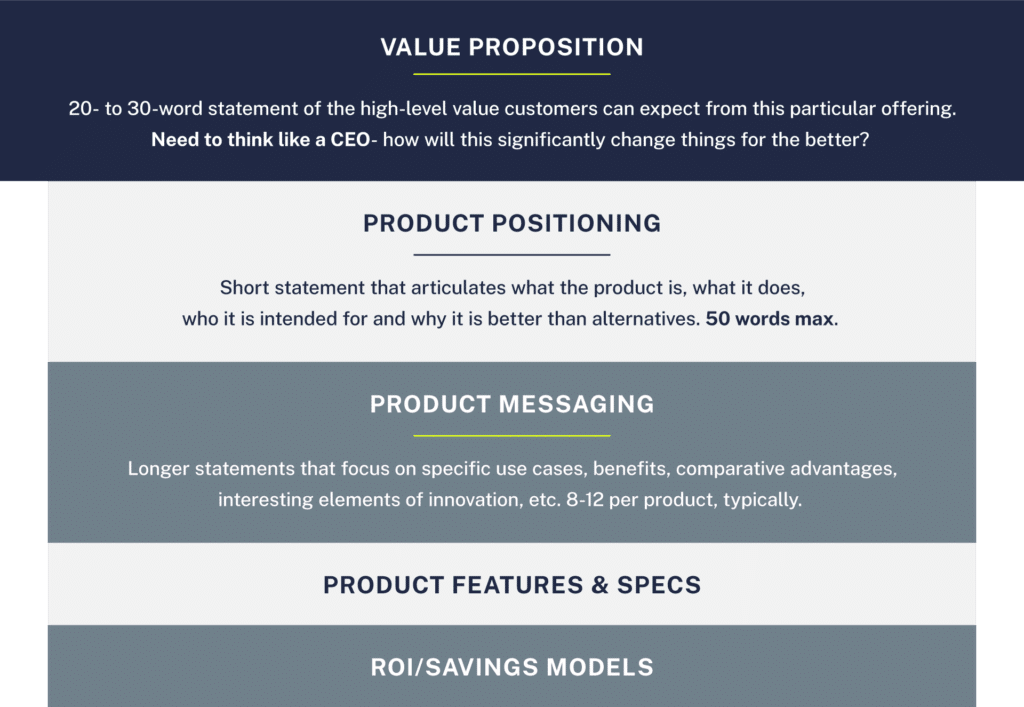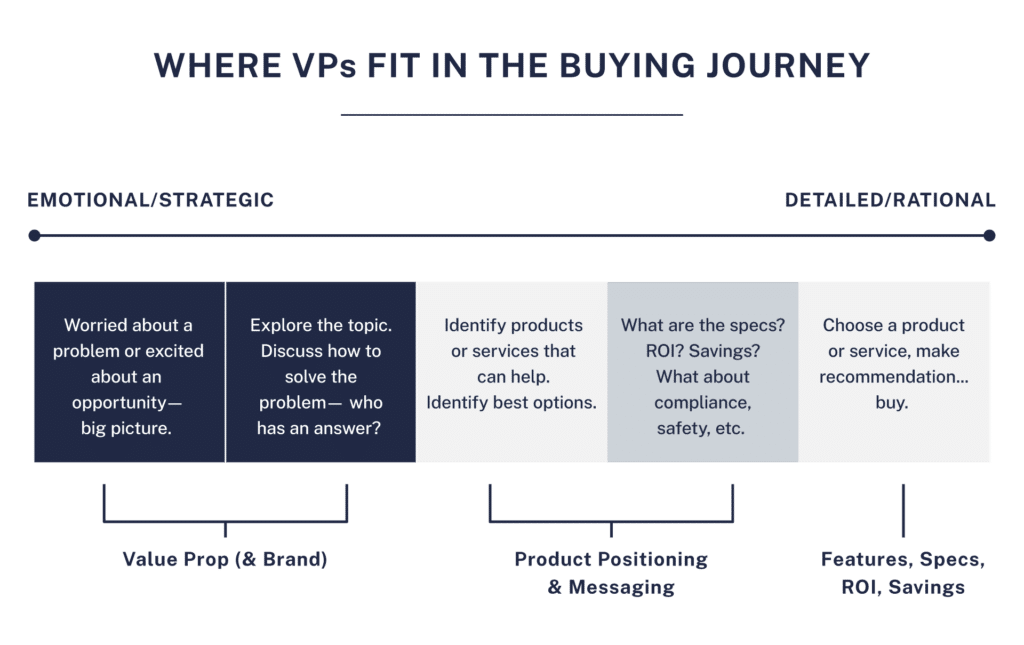Why is it so hard to write good B2B content? We’re not complaining. If it were easy, we wouldn’t have your attention or your business. Even professional writers often miss the mark. The fact is: most B2B messaging sucks. 71% of decision makers say that less than half of the B2B content they consume provides any valuable insight, and only 15% would rank any of the content they consume as ‘excellent’ or ‘very good’. Why?
Your answers would probably be the same as ours. Most messaging is vague, irrelevant, and generalized — full of jargon and inauthentic phrasing. It often lacks a core message, or a clear point of view. Sometimes poorly thought out design undermines what could have been halfway-decent content. Sometimes it lacks a hook, or a clear next step, or a compelling CTA.
But the fundamental problem is a lack of empathy. It’s astonishing how much content we read is still focused on the company, rather than the customer. Nobody likes a conversational narcissist, and yet, marketers tend to get carried away, thinking less about their readers/clients, and more about the product they’re trying to sell, or worse, themselves.
Of all the writing that suffers from this empathy deficit, the worst offender may be the value proposition. In some ways, the value prop is the ultimate test of a company’s ability to cross the bridge between their interests and their customers. Good value props require a company to chisel away their hype around a product until nothing remains but the customer — their needs, and what they gain by choosing you.
We recently held a workshop at our office to help one of our client’s marketing teams hone their skills around value prop writing. Here are a few ideas we cooked up.
Know what a value prop is…and isn’t.
What people get wrong about the value proposition is a window into what people so often get wrong about content writing in general. When asked to describe a product, many people will elaborate on its features and specs — the technical details of what makes it great, or different. While all obviously true and important, this is missing the point. Value propositions are an invitation to get inside the why of your product. Why it’s important. Why someone or some company should plunk down their hard-earned cash (not to mention their time and professional reputation) to go with it. You’re not only competing against alternative products. You’re competing against them doing nothing at all.
Getting in the right headspace:
Think Like a CEO
One way of holding all these insights together in one piece of advice is: to think like a CEO. When writing a value prop, put yourself in the shoes of the person at the highest level of a business’s strategic functioning, and ask…
What would be appealing to them?
- How does your offering solve the problems they’re discussing at their board meeting?
- How can your offering create new opportunities for growth?
- And how can your offering improve the value of the brand overall?
These are macro questions, lying at the highest level of a company’s visionary thinking. This is precisely where you want to position your product or service. The rest of the details can come later — through product positioning and messaging.

This kind of big-picture thinking is often foreign to product designers who are more typically embroiled in the minutiae of what they’re working on. There’s nothing wrong with this — that kind of detail-oriented thinking is precisely what makes these offerings great. But it gets you nowhere if you’re trying to ask why a customer should choose you over anybody else. So instead of trying to unpack all the components, get a little higher up in the clouds and ask — if I were a CEO, how would I be thinking about this?
Where to start:
Crafting a value prop
The best kind of value props are the most economical form of content writing. They have to convey concisely the high-level value of what a customer gains by choosing your offering. The best examples of the genre run about 20-30 words. And this is important: they don’t strand a customer in a bunch of technical details from which they have to connect the dots back to their own needs.

Remember, this is emotional stuff. This has to do with your customers’ pain points. Think about going to the doctor with chronic pain. What would be more reassuring? If the doc tells you she’s going to put you on a course of 50ccs of fabricatioidoxyline for 3 months to mitigate discomfort? Or if the doc tells you she’ll help fix it? You need a big-picture reason for why you are going to move from where you are now (pain) to where you want to be (healed). This is a value prop.
Let’s look at an example
Here’s what DuckDuckGo says about what they offer their customers:
“Tired of being tracked online? We can help. Get seamless privacy protection on your browser for free with one download.”
How does DuckDuckGo actually work? What are its specs? How exactly does it protect my privacy? At this stage, these aren’t the questions we need to answer. What the customer wants is the assurance that their problem — being tracked online — can be solved, and that DuckDuckGo is just the guy to do it. That’s what this value prop promises, along with ease of use and no money down (other pain points!)— in 20 words.
One way to think about it:
Jobs to be done
Read that DuckDuckGo example again. You might notice how it feels like a warm and firm handshake, and not like a spec sheet. There’s solid reasoning behind this.
People don’t buy things because of features, specifications or technologies. When a customer makes a buying choice, the process behind that is much more akin to hiring staff. Customers ‘hire’ products and services to get ‘jobs’ done. DuckDuckGo is who you ‘hire’ to do the hard work of keeping your browsing private.
This observation carries some implications. Companies don’t hire resumes, they hire people. That’s not to say skills (i.e. attributes) aren’t important, but a hiring decision can’t be reduced to that. It’s a much more fluid process, depending on all sorts of qualitative variables, at the top of which is just a good feeling that the person in question will bring the most value to the job. It’s no different with products or services. Pretending otherwise simply adds more trash to the B2B messaging dumpster fire.
Nail the value prop,
nail your B2B writing
Value props are hard. Most of them lack empathy with the reader. They usually do a poor job of conveying value, and a great job of cataloging jargony attributes that nobody cares about. And customers tend to ‘hire’ your offering rather than buying a bundle of traits.
But nailing the value propositions can only do good things for your company. Getting the value prop gets you laser-focused on what matters. From that strong base, you’re able to tell a story, and not simply write a list. It will make you better at conveying the great things you’re doing to greater swathes of customers, which will translate to more money and better retention down the road. Finally — and this is music to our ears — it will make you better writers. Hemingway once wrote: “The first draft of everything is sh*t.”
Don’t settle for sh*t.
